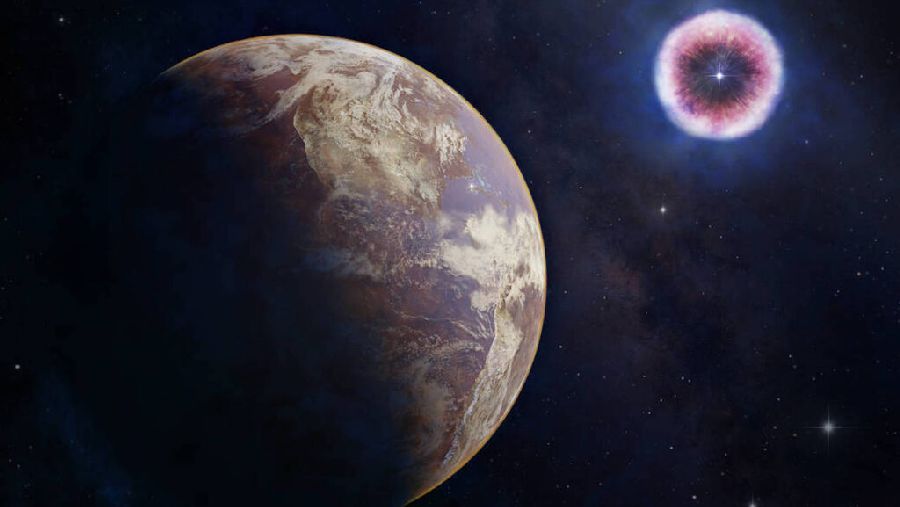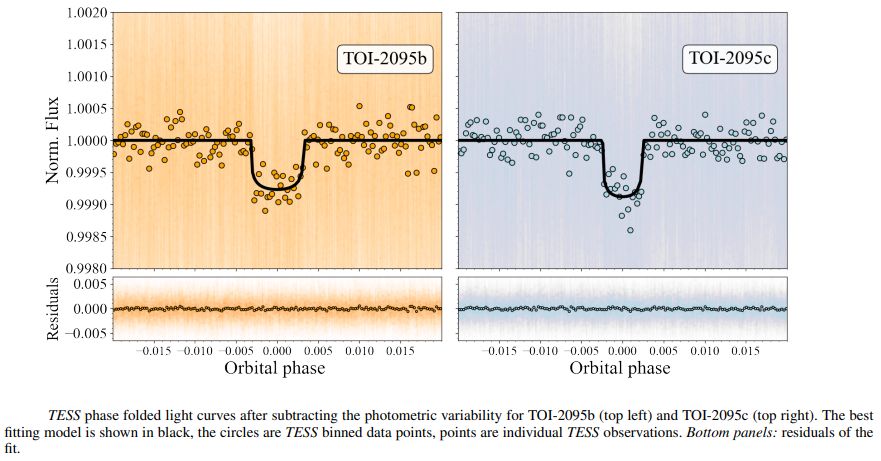
Astronomers are always looking for exoplanets since it opens the door for better understanding of the formation and evolution of planetary systems beyond our own.
With this aim in mind, NASA launched the Transiting Exoplanet Survey Satellite (TESS) in 2018. Primary parameter of this was to monitor the brightness of nearby stars.
Till now, TESS has surveyed nearly 200,000 of the brightest stars near the sun. And so far, it has identified about 6,400 candidate exoplanets. To date, 330 of these candidates have been confirmed as exoplanets through follow-up observations from ground-based telescopes and other space-based observatories.
Two super-Earths orbiting M dwarf TOI-2095
Lately, TESS was able to discover two “super-Earth” exoplanets orbiting a nearby M-dwarf star known as TOI-2095.
M-dwarf stars like TOI-2095 are the most common type of star in the Milky Way galaxy. These stars are also known to be more likely to host Earth-sized exoplanets in their habitable zones, where liquid water could exist on the surface of a planet.
A team of astronomers led by Felipe Murgas of the University of La Laguna, Spain, conducted photometric observations and radial velocity measurements. They discovered that transit signals in the light curve of TOI-2095 are of planetary nature.
The two exoplanets: TOI-2095 b and TOI-2095 c
TOI-2095 b and TOI-2095 c are two exoplanets orbiting the small, dim star TOI-2095.
TOI-2095 b
TOI-2095 b is the closer of the two planets, orbiting at a distance of approximately 0.1 AU from the star, while TOI-2095 c orbits at a distance of 0.137 AU.
TOI-2095 b is about 25% larger than Earth, and its estimated mass is not greater than 4.1 Earth masses. It has an orbital period of 17.66 days and an equilibrium temperature of 347 K, which is relatively hot.
This suggests that TOI-2095 b is likely to be a rocky planet with a thick atmosphere, which may make it difficult for life to survive.
TOI-2095 c
TOI-2095 c, on the other hand, has a radius of about 1.33 Earth radii, making it larger than TOI-2095 b.
It has an estimated maximum mass of 7.4 Earth masses and orbits its host every 28.17 days, at a distance of approximately 0.137 AU.
Its equilibrium temperature is approximately 297 K, which is cooler than that of TOI-2095 b.
This suggests that TOI-2095 c may be a gas giant or a sub-Neptune planet.

Host star: TOI-2095
The host star TOI-2095 is a small, dim M2.5 V star, which is about 56% smaller and less massive than the sun.
It has an effective temperature of 3,759 K and a metallicity level of -0.24, indicating that it has a lower abundance of heavy elements than the sun.
The age of the star is estimated to be at least one billion years, which is relatively old compared to the sun.
Takeaway
The new found exoplanets have short orbital periods, which implies that they orbit their star relatively quickly. Thus, it’ll be easier to study them in detail.
Additionally, their slightly larger size than Earth suggests that they may have thicker atmospheres, which could make them interesting targets for further atmospheric characterization.
Overall, this discovery adds to our growing understanding of the diversity of planetary systems in the universe and highlights the important role that TESS is playing in advancing our knowledge in this field.
Via: Phys.org



